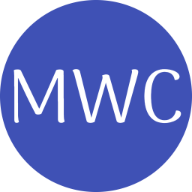Lean Principles in the Classroom: Maximizing Efficiency and Learning Outcomes
As technology continues to advance and the pace of life speeds up, educators are looking for ways to improve the efficiency of their classrooms. One approach that has gained popularity in recent years is the use of Lean principles, a methodology developed by Toyota in the 1950s to streamline manufacturing processes. By applying these principles to education, educators can maximize efficiency and improve learning outcomes.
Lean principles focus on eliminating waste and improving workflow. In the classroom, this means identifying and eliminating any activities or processes that do not contribute to student learning. Here are some key principles of Lean that can be applied to education:
Value: The first principle of Lean is to define value from the customer's perspective. In education, the "customer" is the student. To maximize efficiency, educators must focus on providing value to their students. This means identifying what students need to learn and designing lessons and activities that will help them achieve those learning goals.
Flow: The second principle of Lean is to create a smooth flow of work. In education, this means designing lessons that have a logical progression and building in opportunities for students to practice and apply what they have learned. It also means eliminating any unnecessary steps or activities that disrupt the flow of learning.
Pull: The third principle of Lean is to create a system in which work is pulled through the process as needed, rather than pushed through according to a predetermined schedule. In education, this means designing lessons that are responsive to student needs and pacing learning based on student progress.
Standardize: The fourth principle of Lean is to standardize work processes to create consistency and reduce variability. In education, this means establishing clear expectations and procedures for learning activities and assessments. It also means ensuring that all students have access to the same resources and opportunities.
Continuous Improvement: The fifth principle of Lean is to continuously improve processes through ongoing experimentation and learning. In education, this means using student feedback and data to make adjustments to teaching methods and learning activities. It also means being open to new ideas and approaches that can improve learning outcomes.
By applying these principles to education, educators can maximize efficiency and improve learning outcomes. Here are some practical ways to apply Lean principles in the classroom:
Identify Learning Goals: Start by defining the learning goals for each lesson or unit. This will help you design activities and assessments that are focused on achieving those goals.
Eliminate Waste: Identify any activities or processes that do not contribute to student learning and eliminate them. This may include unnecessary paperwork, redundant activities, or activities that do not align with learning goals.
Build in Practice and Application: Design lessons that allow students to practice and apply what they have learned. This may include group work, hands-on activities, or projects.
Monitor Student Progress: Use data to monitor student progress and adjust learning activities as needed. This may include formative assessments, student feedback, or other types of data.
Continuous Improvement: Continuously improve teaching methods and learning activities based on student feedback and data. This may include experimenting with new approaches, seeking out professional development opportunities, or collaborating with other educators.
In conclusion, by applying Lean principles to education, educators can maximize efficiency and improve learning outcomes. By focusing on providing value to students, creating a smooth flow of work, pacing learning based on student progress, standardizing work processes, and continuously improving teaching methods and learning activities, educators can create a classroom that is more efficient, effective, and focused on student learning.
